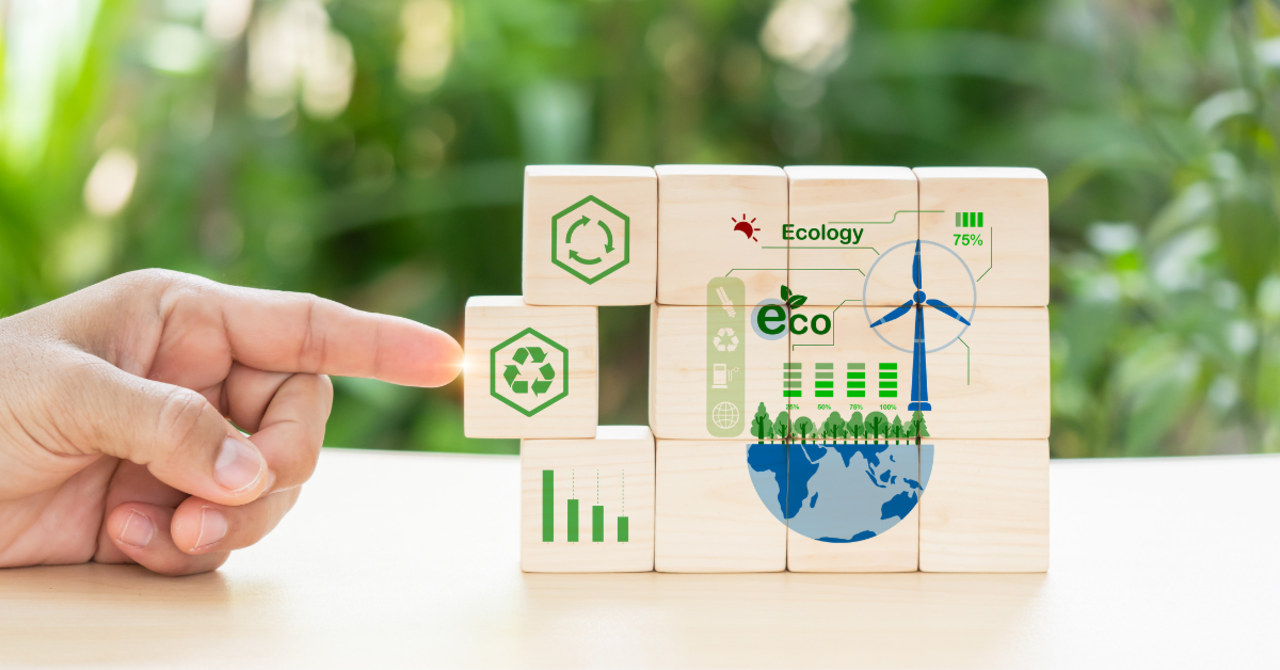Bio Circular Economy: The New Path To Sustainable Growth

In the pursuit of progress and prosperity, our current economic model has propelled humanity towards remarkable advancements, significantly improving our quality of life. However, this progress has come at a cost to our planet. As our economy has flourished, so too has the exploitation of natural resources and the degradation of our environment.
Recognizing the urgency of this situation, a new paradigm has emerged—the "Bio Circular Economy." This transformative concept has emerged as a response to the pressing challenges posed by our current economic system. It seeks to redefine our approach to production and consumption, aiming to harmonize economic growth with environmental sustainability and social well-being.
1. What is Bio circular economy?
A bio circular economy is an economy driven by natural resources. This system emphasizes the responsible and efficient use of resources, reducing waste generation, and promoting the regeneration of natural systems.
Nature operates in the connected cycles, where waste from one organism becomes a resource for another. Bio circular economy is inspired by these principles, then it applies and adjusts suitably with the economy. 
Bio circular economy are based on 3 principles:
Eliminate waste and pollution: This principle focuses on minimizing waste generation and reducing harmful pollution throughout the entire product lifecycle. It involves designing products and processes to eliminate or reduce waste, emissions, and the use of hazardous substances. The goal is to prevent environmental damage, protect ecosystems, and promote sustainable production and consumption practices.
Circulate products and materials: The second principle emphasizes creating a closed-loop system where products and materials are kept in circulation for as long as possible. This involves practices such as reusing, recycling, and remanufacturing. By extending the lifespan of products and promoting the recovery and regeneration of materials, the Bio Circular Economy aims to reduce the need for virgin resources and minimize the strain on natural ecosystems.
Regenerate future: The third principle highlights the importance of restoring and regenerating natural systems to ensure a sustainable future. It involves actively replenishing and enhancing the natural capital that supports life on Earth. This can be achieved through initiatives such as reforestation, habitat restoration, and regenerative agriculture practices. By prioritizing the regeneration of ecosystems and biodiversity, the Bio Circular Economy aims to create a resilient and thriving environment for future generations.
2. Policy and Regulatory Framework for the Bio Circular Economy
The Policy and Regulatory Framework for the Bio Circular Economy encompasses various aspects that facilitate and support the transition to a sustainable economic model. Governments play a crucial role in driving this transformation by implementing initiatives and incentives that promote the adoption of bio circular practices. These can include financial incentives, tax breaks, and grants to encourage businesses and individuals to embrace sustainable production and consumption methods.
Furthermore, international cooperation and agreements are vital for advancing the Bio Circular Economy globally. Collaborative efforts between nations, organizations, and stakeholders facilitate knowledge sharing, technology transfer, and the harmonization of standards and regulations. By working together, countries can collectively address global environmental challenges and accelerate the adoption of bio circular principles on a larger scale.
Legal and regulatory considerations are essential for establishing a supportive framework for the Bio Circular Economy. Governments need to develop and enforce regulations that incentivize sustainable practices and penalize environmentally harmful activities. These regulations can cover areas such as waste management, resource extraction, emissions control, and the use of bio-based materials. Clear and consistent policies provide a level playing field for businesses, encouraging innovation and investment in bio circular solutions.
3. Challenges in applying Bio Circular Economy
While the Bio Circular Economy presents a promising pathway to a sustainable future, it is not without its share of challenges that must be addressed.
Mindset and Behavioral Change: Shifting from a linear economic model to a Bio Circular Economy requires a significant mindset and behavioral change at various levels, including individuals, businesses, and governments. Overcoming resistance to change and ingrained habits can be a major challenge. Education, awareness campaigns, and demonstrating the economic and environmental benefits of the Bio Circular Economy are necessary to drive this behavioral shift.
Regulatory and Policy Framework: The absence or inadequacy of supportive policies and regulations can hinder the transition to a Bio Circular Economy. Governments need to create an enabling environment through the implementation of clear and consistent regulations that incentivize sustainable practices, encourage innovation, and penalize environmentally harmful activities. A lack of alignment between different regulatory frameworks and inconsistencies in standards across regions can create barriers to the adoption of bio circular practices.
Financial Considerations: Transitioning to a Bio Circular Economy may involve upfront costs for technology upgrades, research and development, and infrastructure improvements. Securing financial resources and overcoming the perception that sustainable practices are costlier in the short term can be challenging for businesses, especially smaller enterprises. Access to funding, incentives, and favorable financing mechanisms can help overcome financial barriers.
Scalability and Global Adoption: While there are successful bio circular initiatives and projects in various regions, achieving global scalability remains a challenge. Adapting and implementing bio circular practices across different geographical regions, socio-economic contexts, and industrial sectors requires tailored approaches and localized solutions. Sharing knowledge, best practices, and fostering international collaborations are crucial for scaling up the Bio Circular Economy globally.
One of the solutions to contribute to Bio Circular Economy is pursuing the Netzero achievement, which is the long term goals of global government and also Vietnam.
Learn more: Unveiling Net-Zero Solutions: Transforming Industries for Climate Action
AirX, purchasing the purpose of providing high-quality plant-based carbon negative products, always searching and innovating the technique of bio-based products manufacturing. Our process and materials are ensured to be closely monitored, which adapt the needs of qualified finished products of our customers. Our bio-based materials offer the same functions of conventional plastics, but its environmentally friendly characteristics make them an ideal choice for partners, businesses looking for sustainable development. 
4. Contact us
AirX is the world’s first carbon-negative bio-material made from coffee grounds manufacturer.
We specialize in producing bio-based composites using recycled carbohydrates derived from by-products such as coffee grounds, coconut husk, husk, and bamboo. Our goal is to promote sustainability through the use of eco-friendly materials.
We are always here to help and provide the best service possible. If you have any questions or would like to receive advice and feedback directly from our sales staff, please do not hesitate to contact us. You can reach us through:
- Whatsapp: +84 969 742 950
- Email: [email protected]
We look forward to hearing from you!

